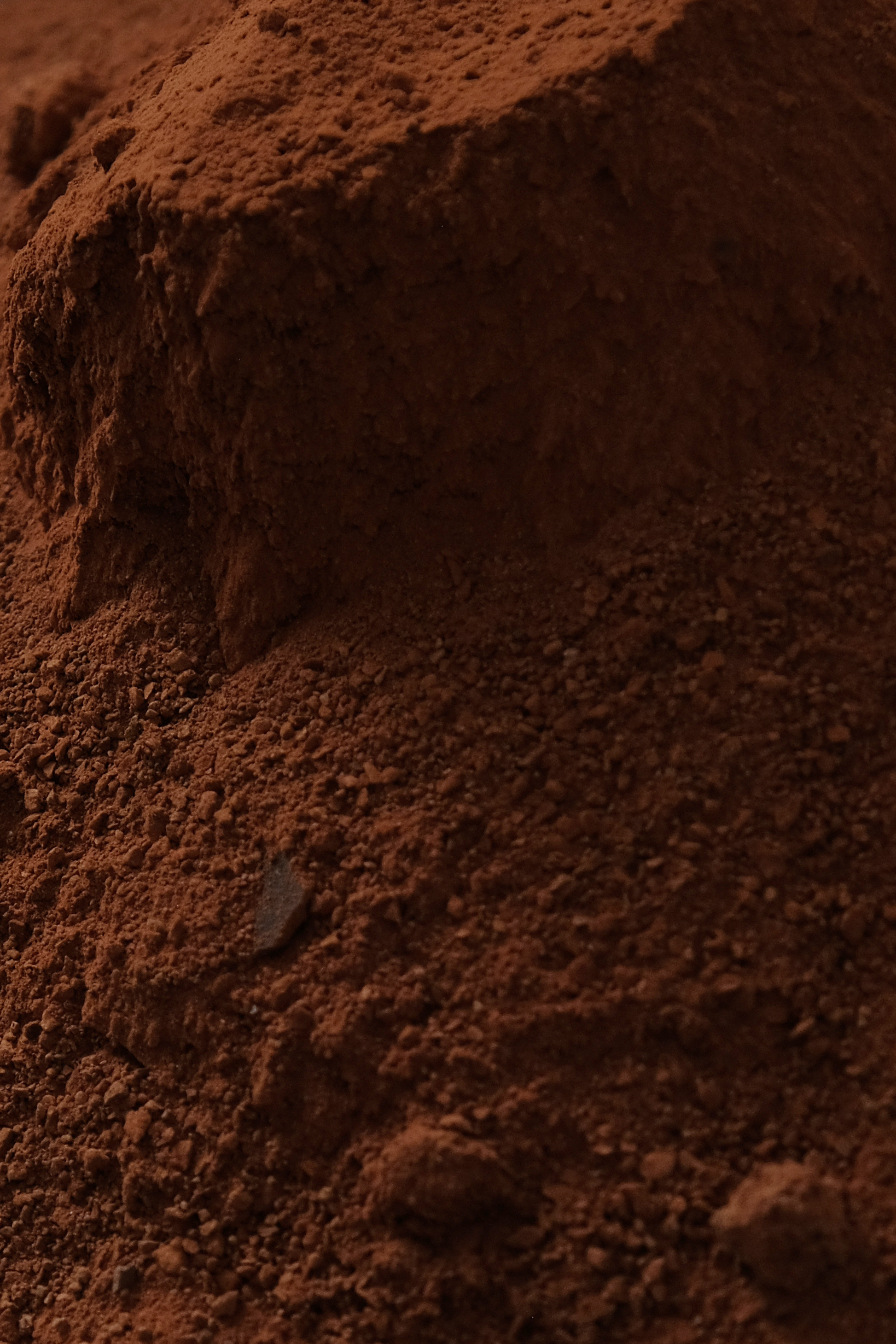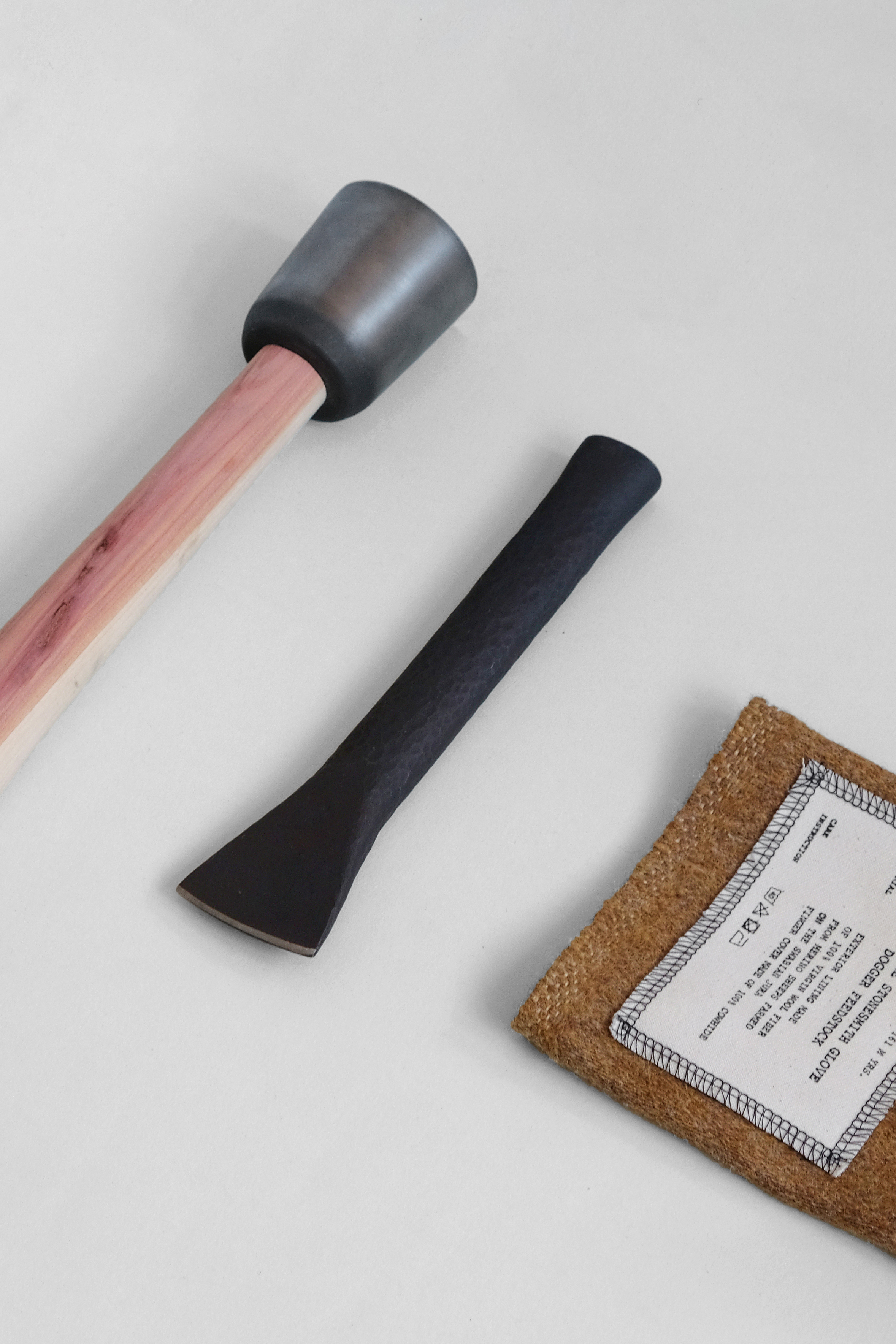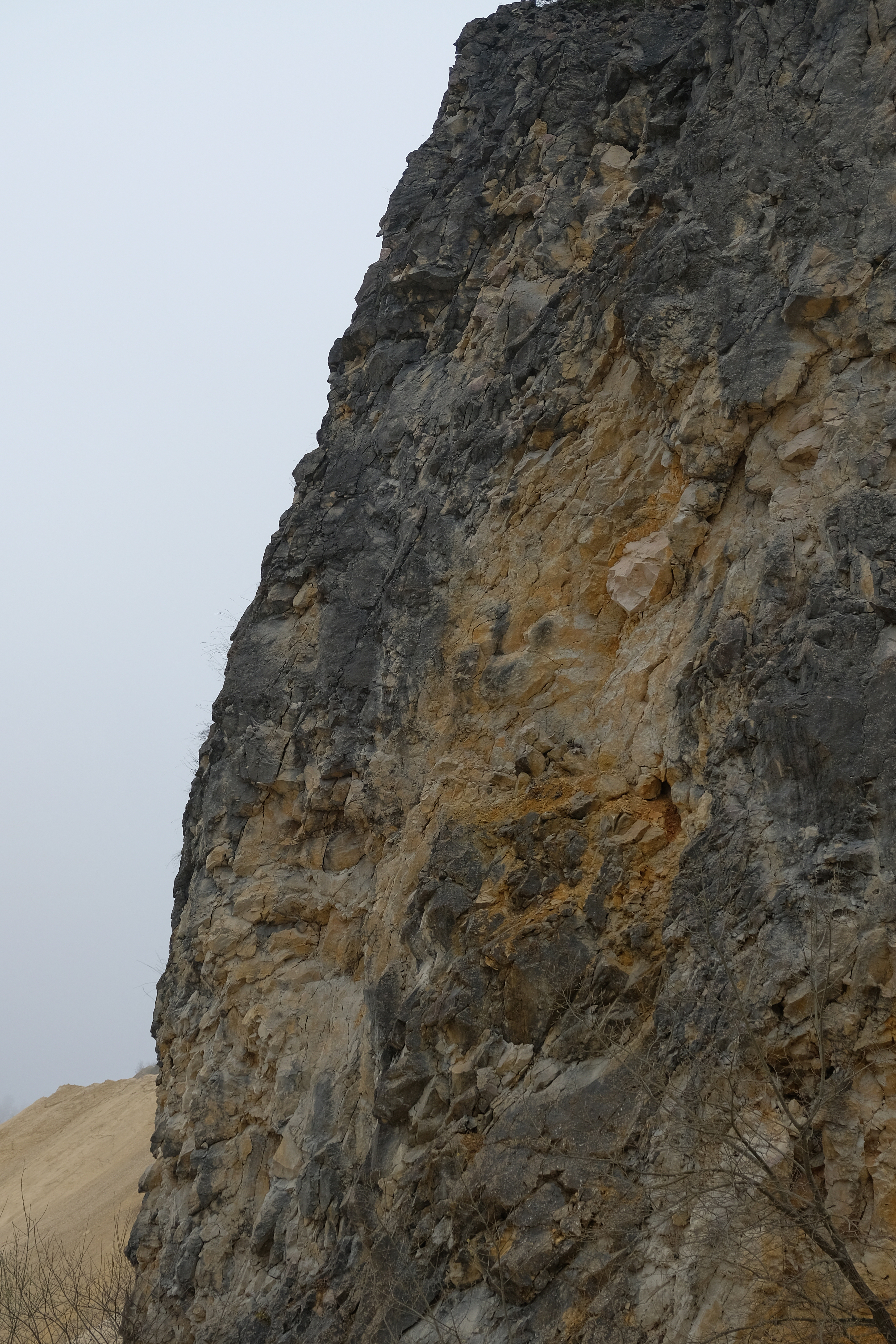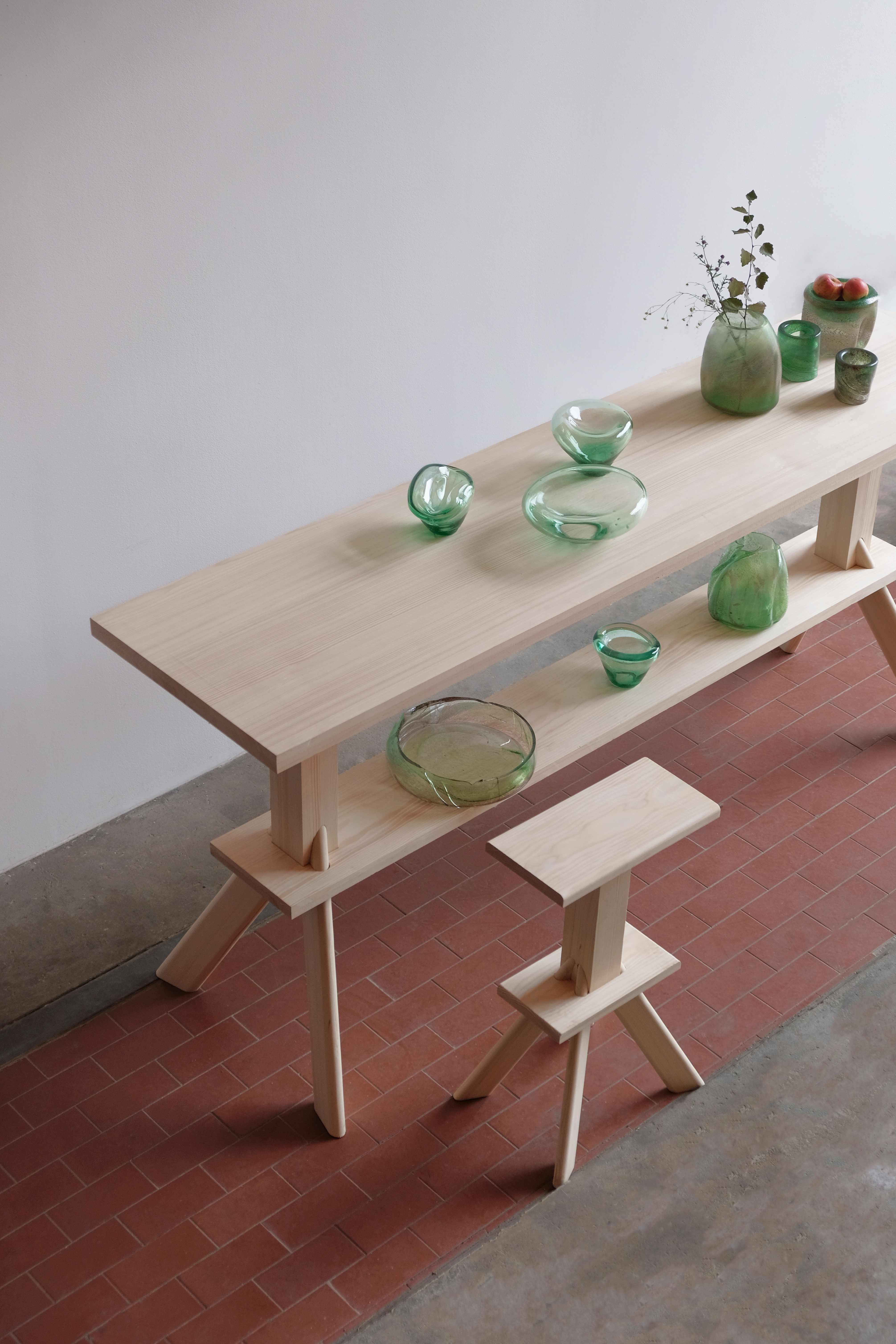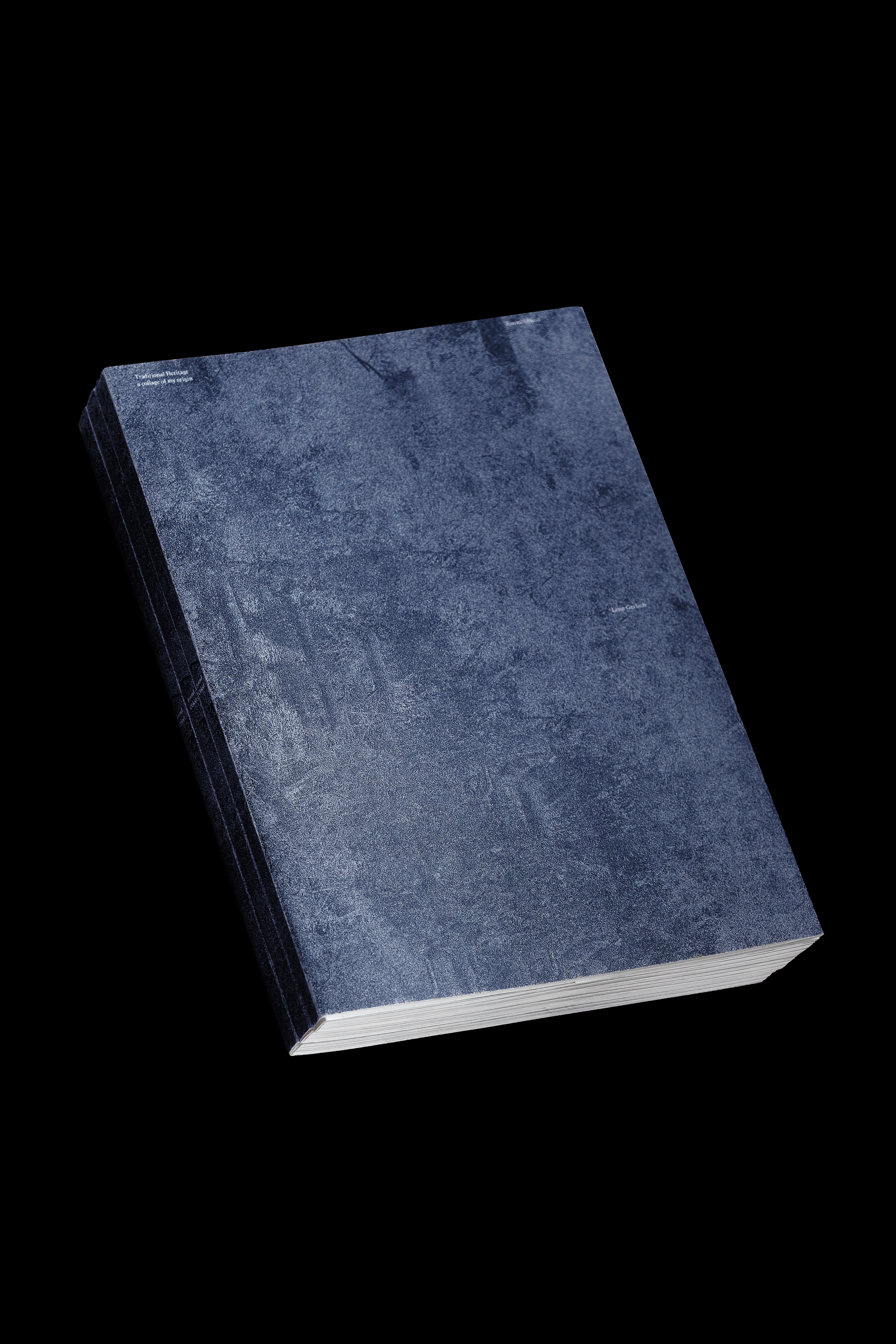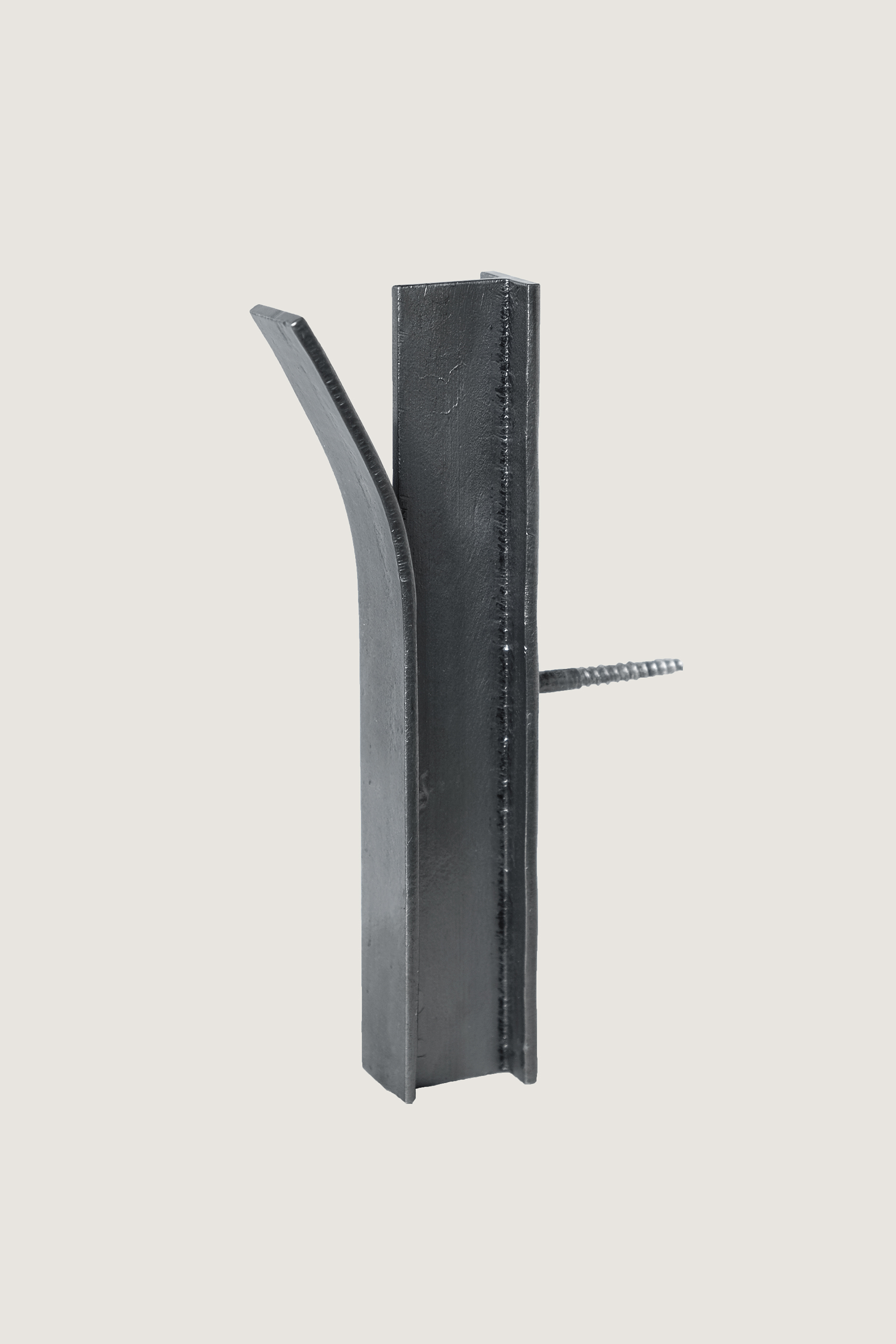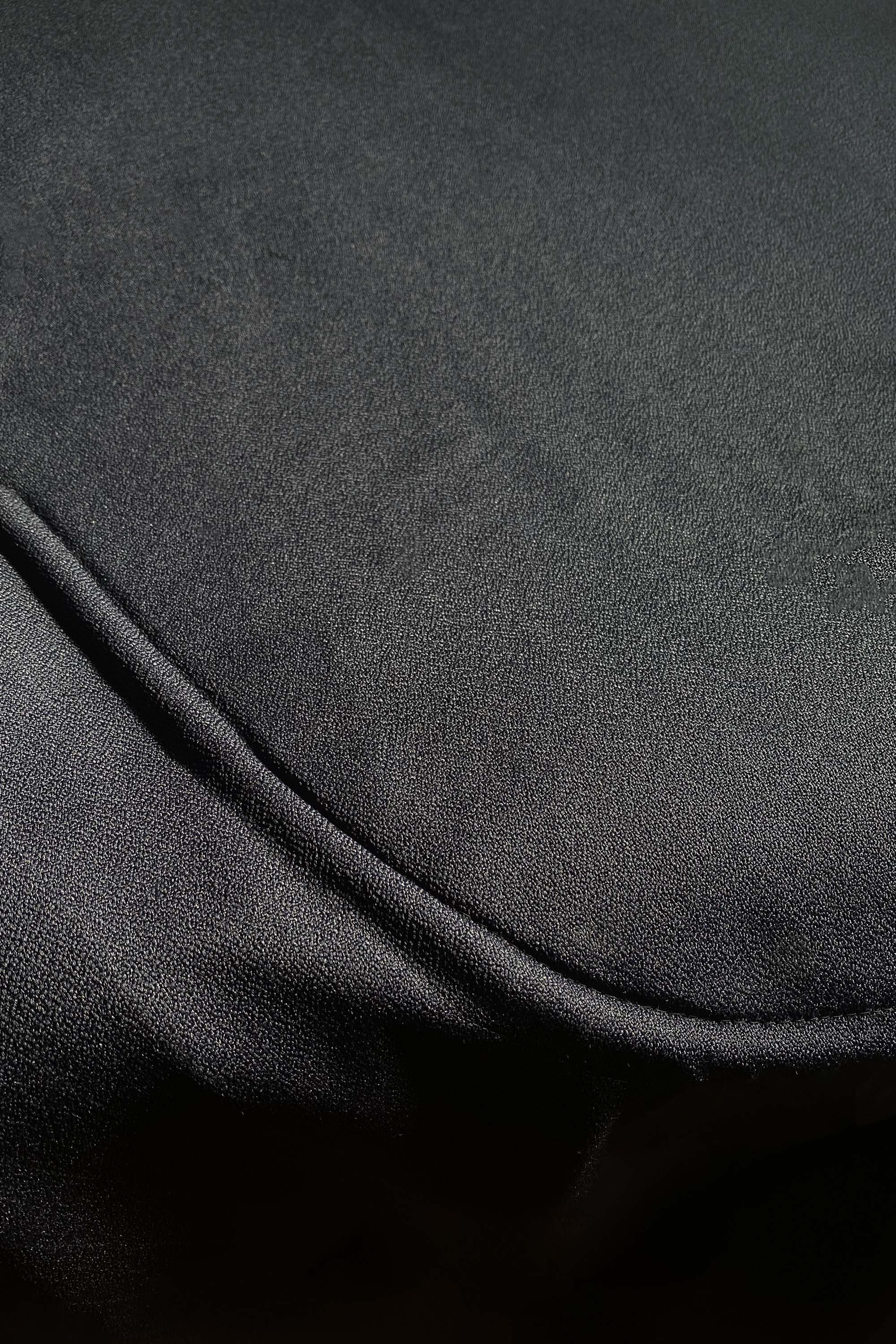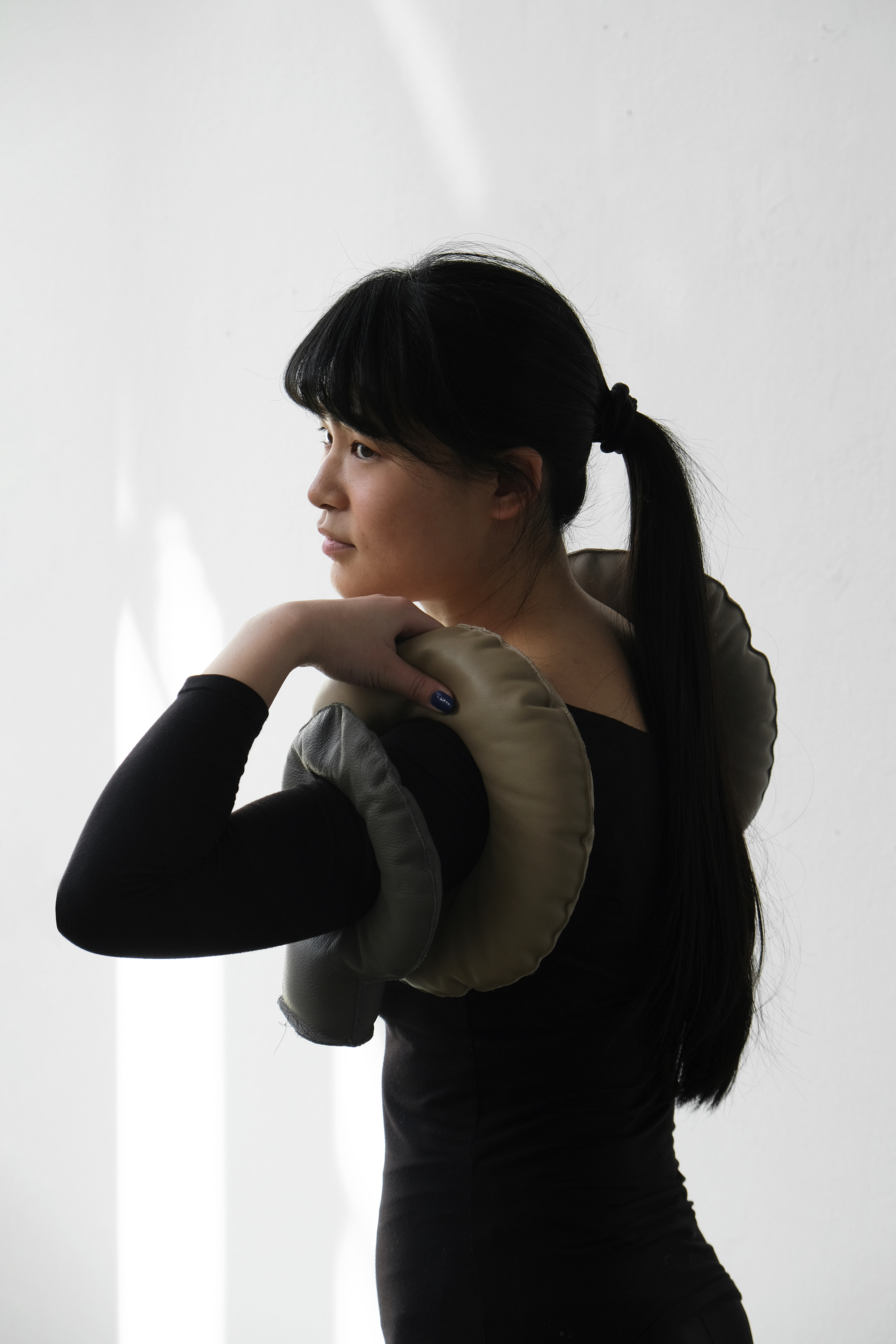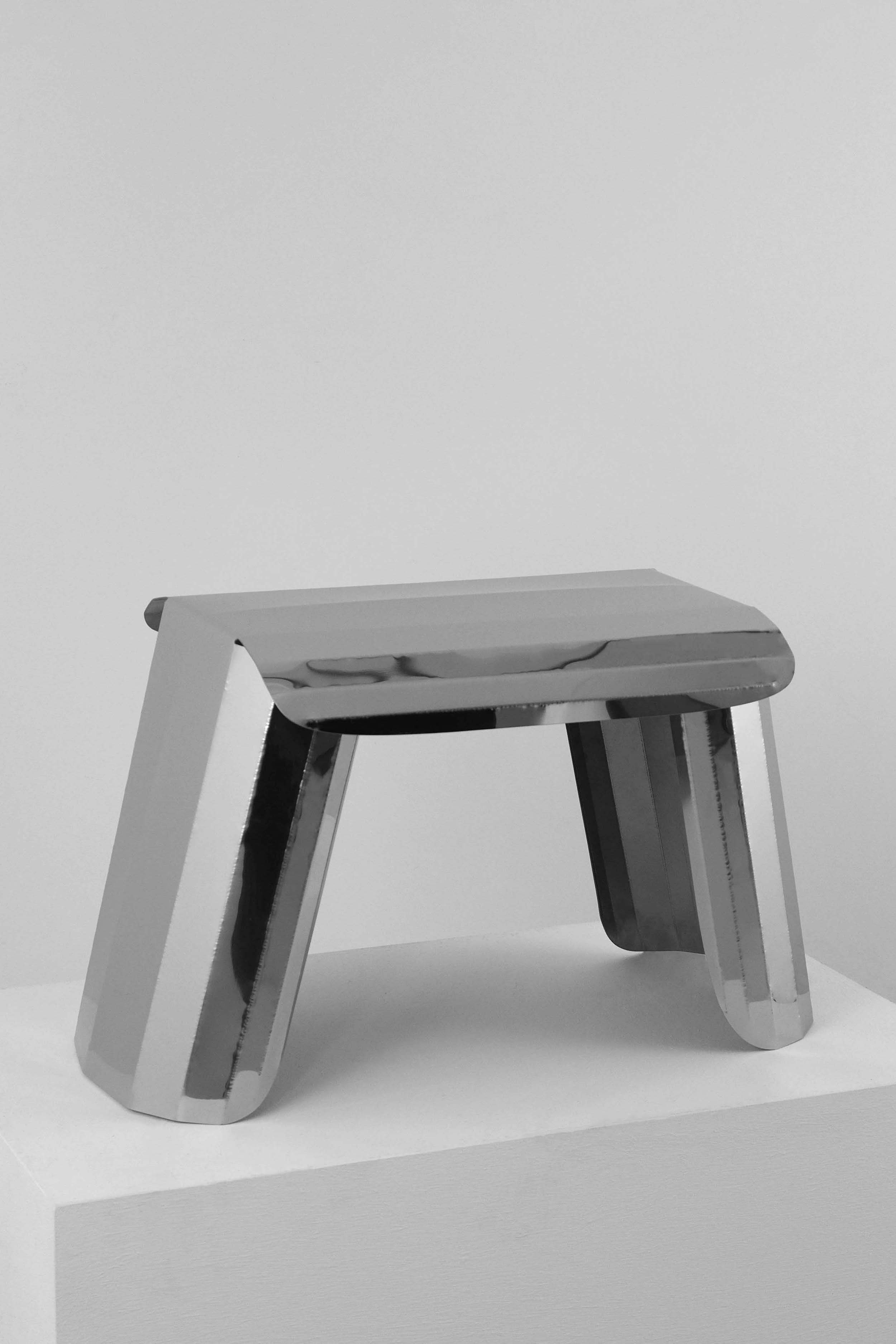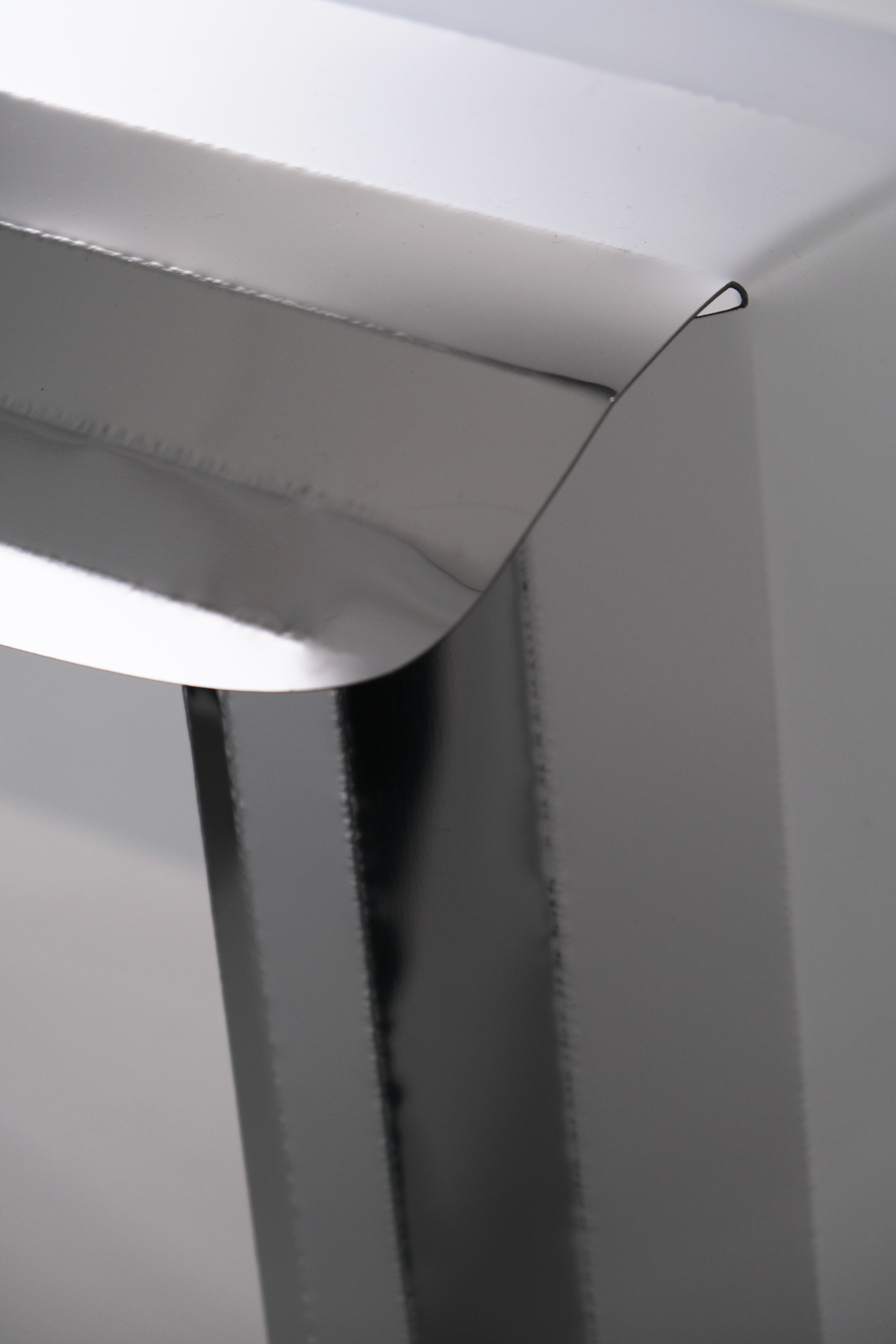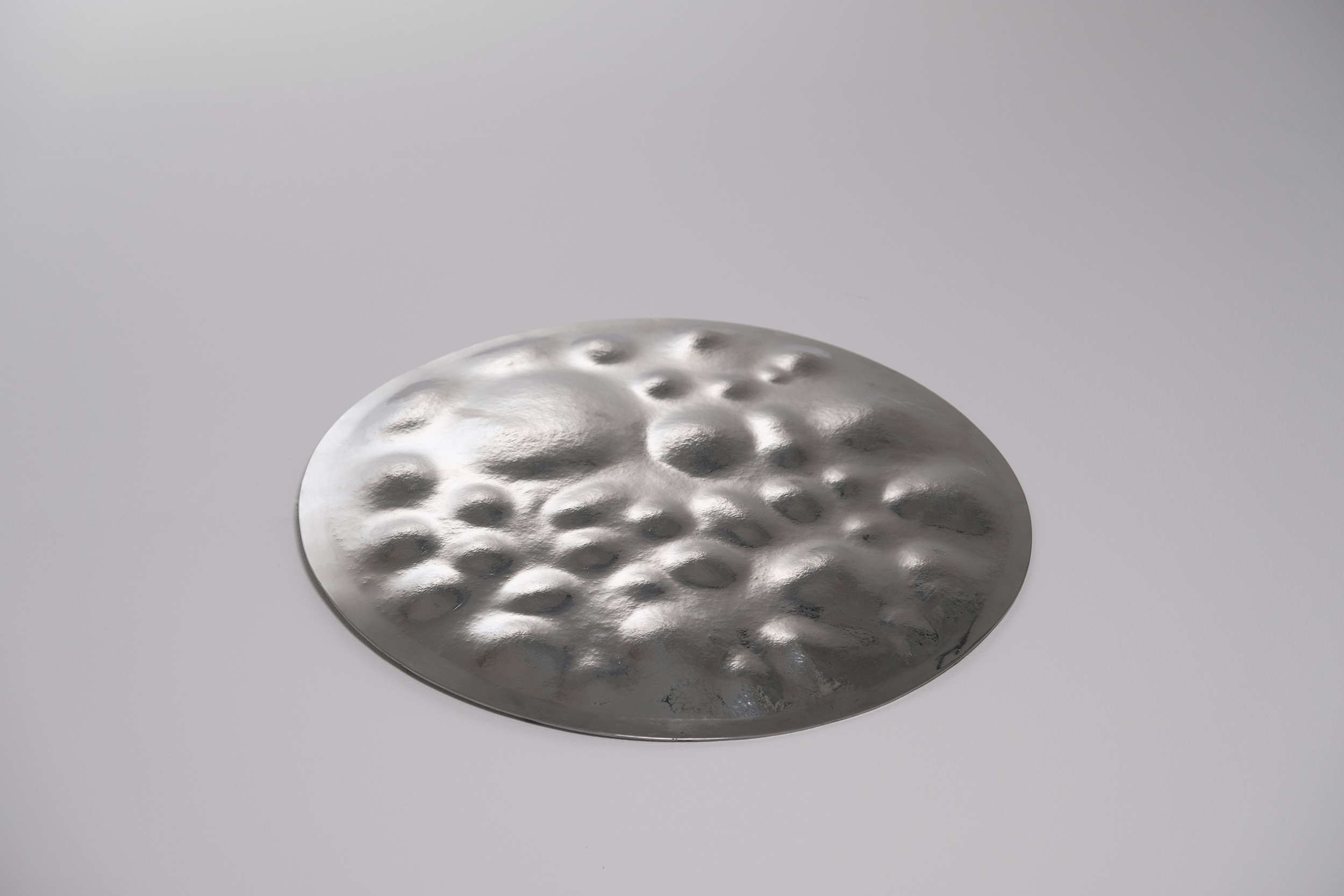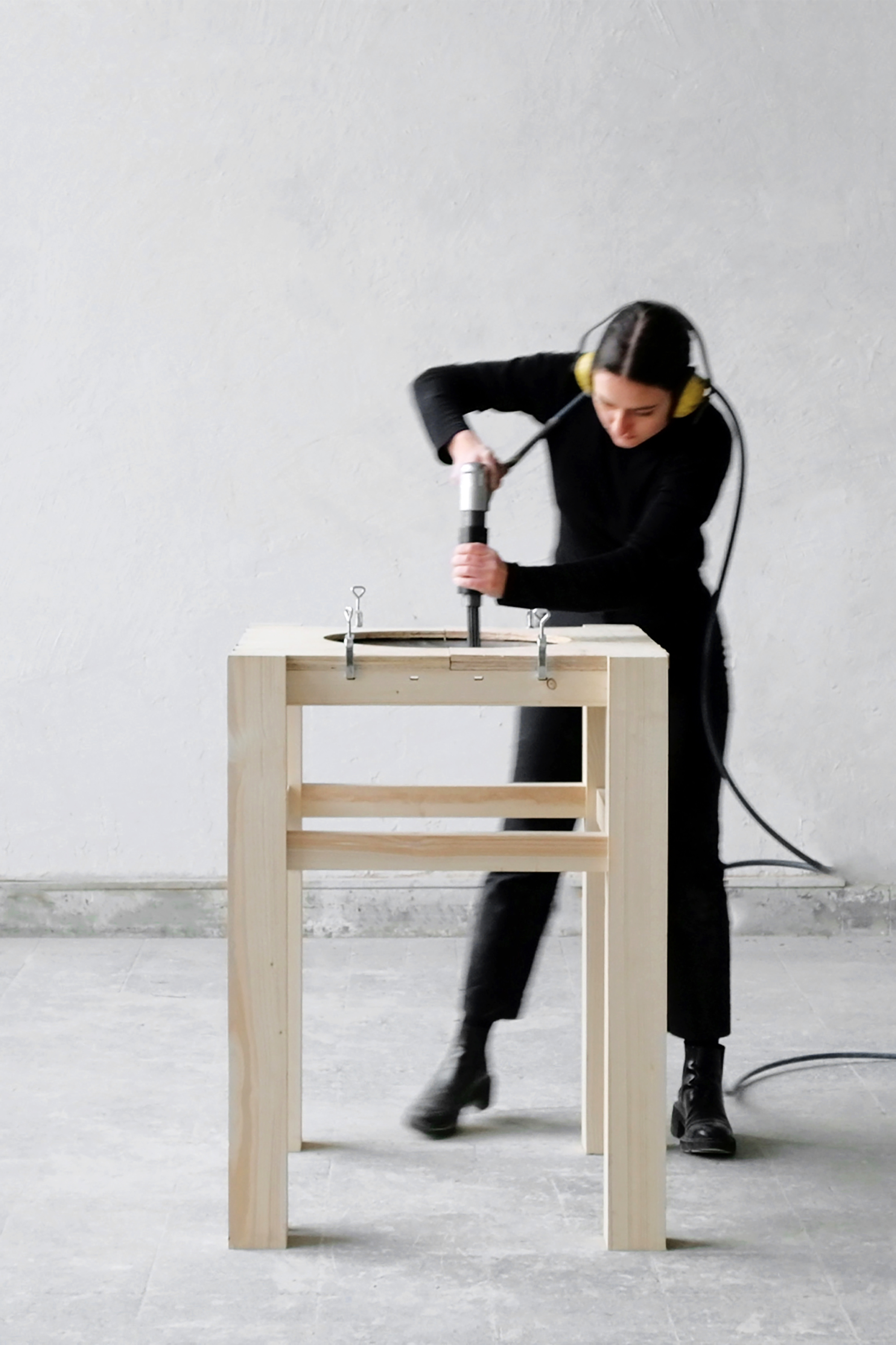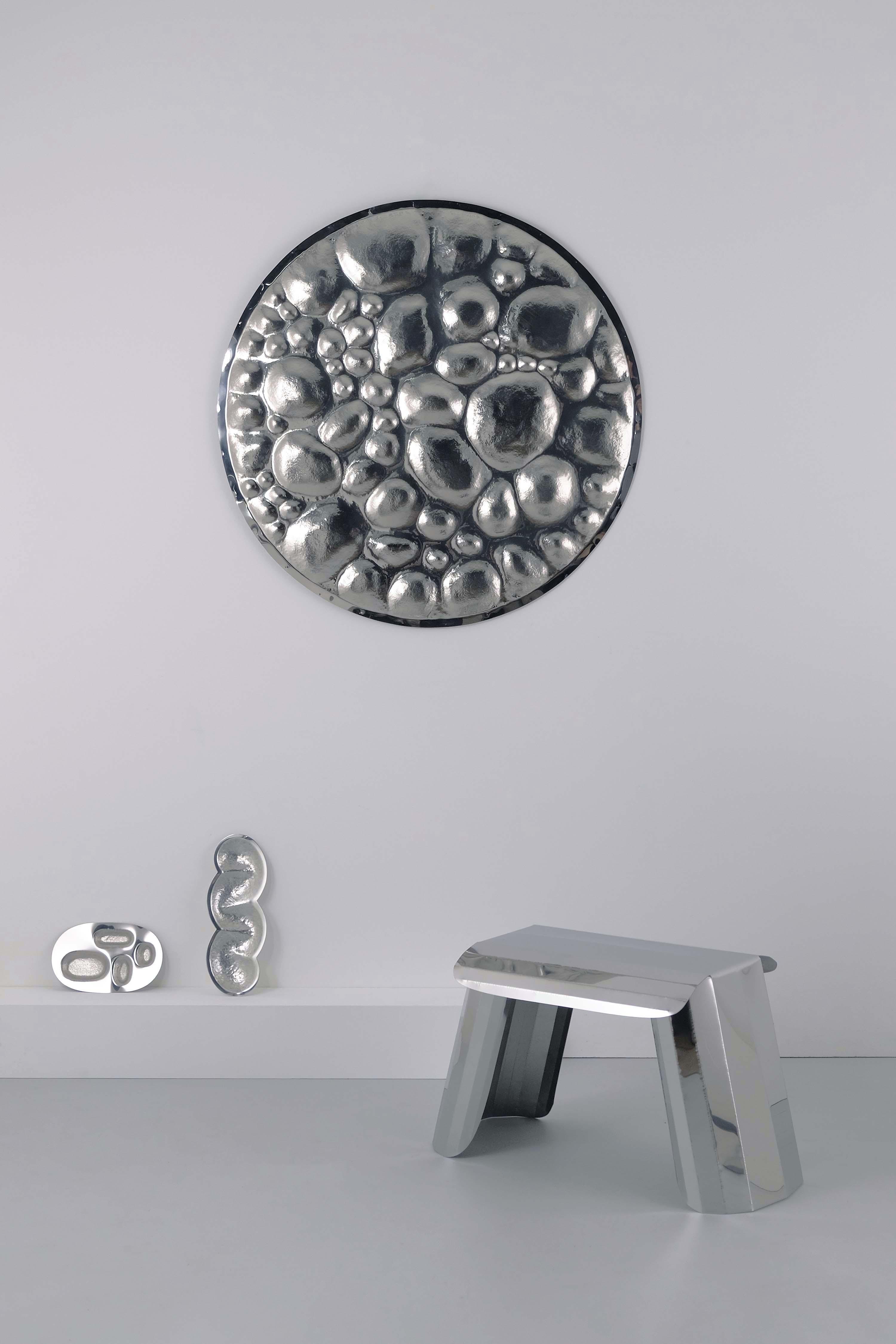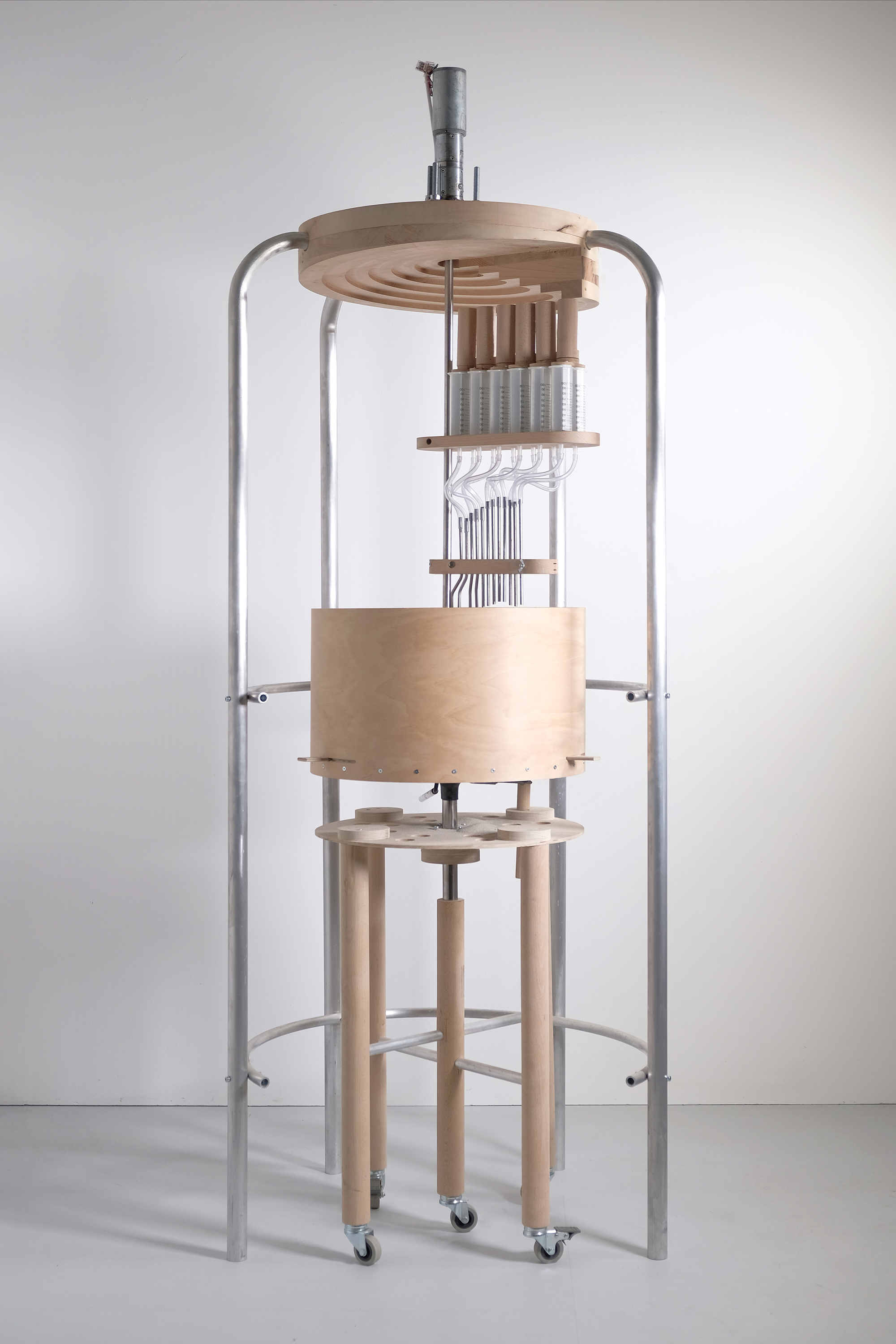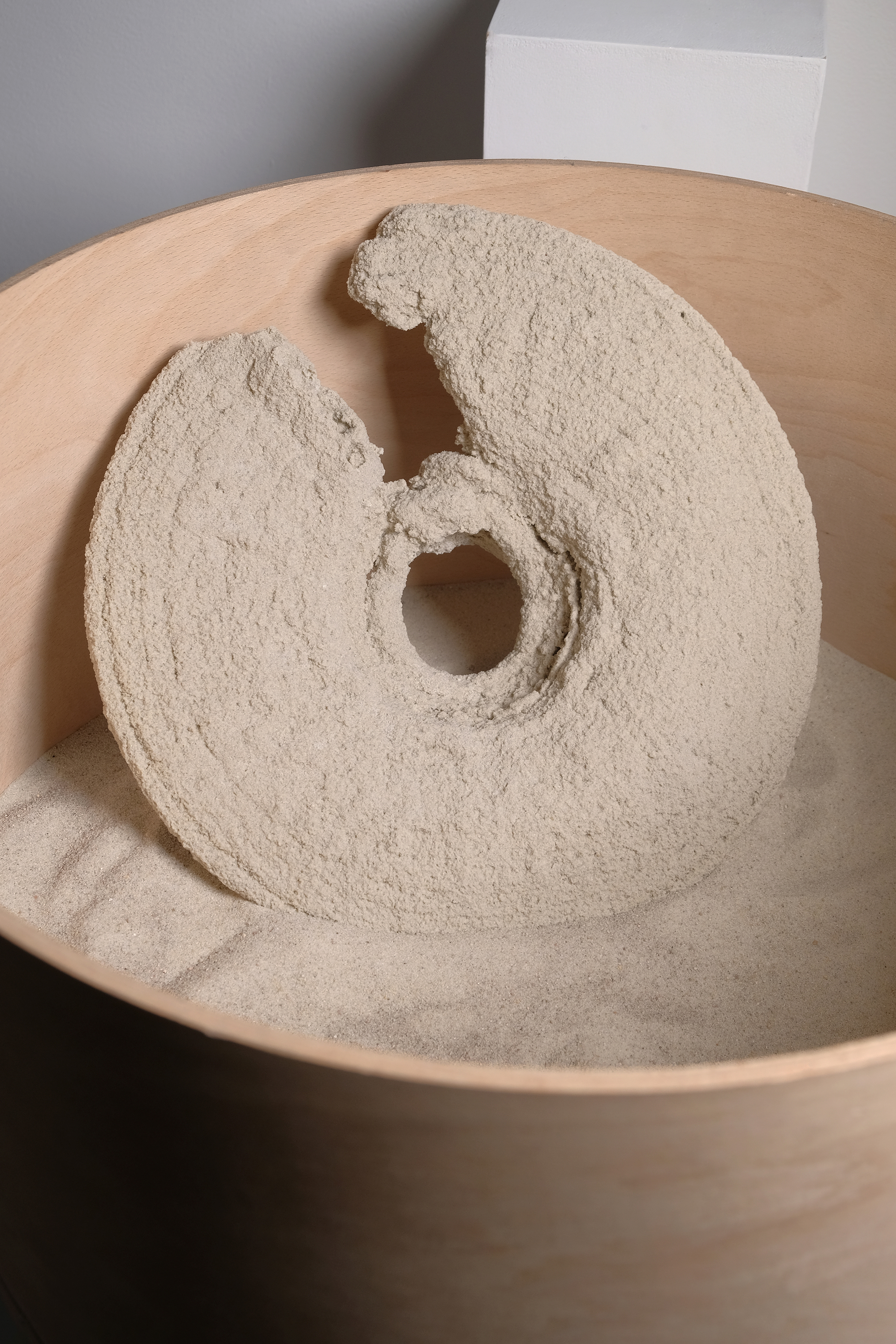Fragments of mining
2022 Lias
The first part of the work, which is about the lowest rock layer of the Alb, the Black Jura, deals with the stone broken by nature and its reification through design practice. Various conspicuous features and phenomena are assembled collage-like through our furniture-typological perception into 6 objects made of different fragments and staged in an installation.
Fragments of mining
2022 Dogger
The second part is about the middle rock layer of the Swabian Alb, the brown Jura. With tools, man opens up the material and knowledge autodidactically. Through the haptic, visual and olfactory experience, the connections of geology can be understood on a more profound level. In the course of the project, tools for stone quarrying such as work clothes and tools were designed.
Fragments of mining
2022 Malm
The third part of the work, on the uppermost Jura sediment Malm, is about an outlook that understands nature as a producing machinery through an added tool. The natural phenomenon of the growth of lime tufa is an open-pored limestone that is deposited by CO2 absorption of moss and algae in streams. With the help of a modular experimental set-up, the natural formation process is intervened in to create optimal conditions of up to 2cm growth per year for the formation of the rock.
Traditional Heritage
2022 Glass
This series of different glass objects represents a new interpretation of old glass vessels from the Black Forest between the 16th and 19th century in terms of their materialiand processing technology. They take reference from the Buhlbach glassworks in the northern Black Forest which is the birthplace of the champagne bottle.
Traditional Heritage
2022 Furniture
Designed as display furniture for an exhibition on the cultural heritage of the Black Forest, this collection is a reinterpretation of traditional wedging techniques from woodworking. CNC milled wooden parts such as the seat of the chair can be locked together with the legs without additional screws or glue needed.
Traditional Heritage
2022 Found Object
The cataloge is a collection of artifact images from the Black Forest. It functions as an insight into the product and tool peripherals of the 17th to 19th century. The catalogue shows that what brought need and naturally served the purpose of a cause was created.
T I H L
2021 Profile Hook
The T-beam is probably the most iconographic structuring object of the industry. Through small interventions of the halffinished material, a wall hook collection was created from T, H, I and L-profiles. The graphic playful cuts and bends add different characters to the hooks, which remind us of their original state as a supporting structure material on a closer look.
Corpus exersere
2021 Mat & Bands
This project questions the previous appearance of fitness objects in times when necessarily most workouts were practiced from home. Corpus exersere represents a collection of training objects for a hybrid living space.
Corpus exersere
2021 Leather Weights
The "leather weights" series is part of a wider range of objects which find their purpose in the intersection of a human-driven physical engagement and a sculptural approach. The weights serve multiple functions across three distinct phases: exertion, relaxation, and conscious presence all intertwined with the interaction through the human body.
Hammered Scapes
2021 Hammered Stool
This stool is made of one piece laser cut sheet metal. By moving a compressed air hammering gun linearly over the sheet metal, folds can be created that enable a stable and very lightweight stool.
Hammered Scapes
2020 Hammered Trays
2020 Hammered Trays
Vessels and dishware used to be the archetypal objects of the hammering craft. They were traditionally manufactured from copper due to it’s soft characteristics. By using the nail gun, stiffer metals as stainless steel can be processed.
Hammered Scapes
2019 Mirror Circle
2019 Mirror Circle
The circle is considered as a symbol of completeness. It has no beginning and no end. The landscaped circle was produced to illustrate the production method and it’s inherent potentials. The production process Hammered Scapes enables to form the sheet metal in a painternly way. The circle was intuitively created and freehand hammered.
2019 Hammered Scapes
This technique is a new interpretation of the hammering craft. Individual punches on the sheet metal are caused by the impact of a compressed-air nailgun. The workbench and CNC-milled stencils, which were designed for the purpose of hammering, help to form reproducable shapes and to control the movement of the sheetmetal during the process. The workbench represents the center of the happening.
2019 Ruins of Present
The machine produces rotationally symmetrical ruin-like vessels out of sand. Syringes are used to inject the liquid potassium silicate into the sand. Potassium silicate is a liquid derived from silicon that silicifies sand, that „ sticks“ it together. Carbon- dioxide from the air around hardens the liquid, thus creating vessels of limited lifetime that have a ruin-like appearance.

